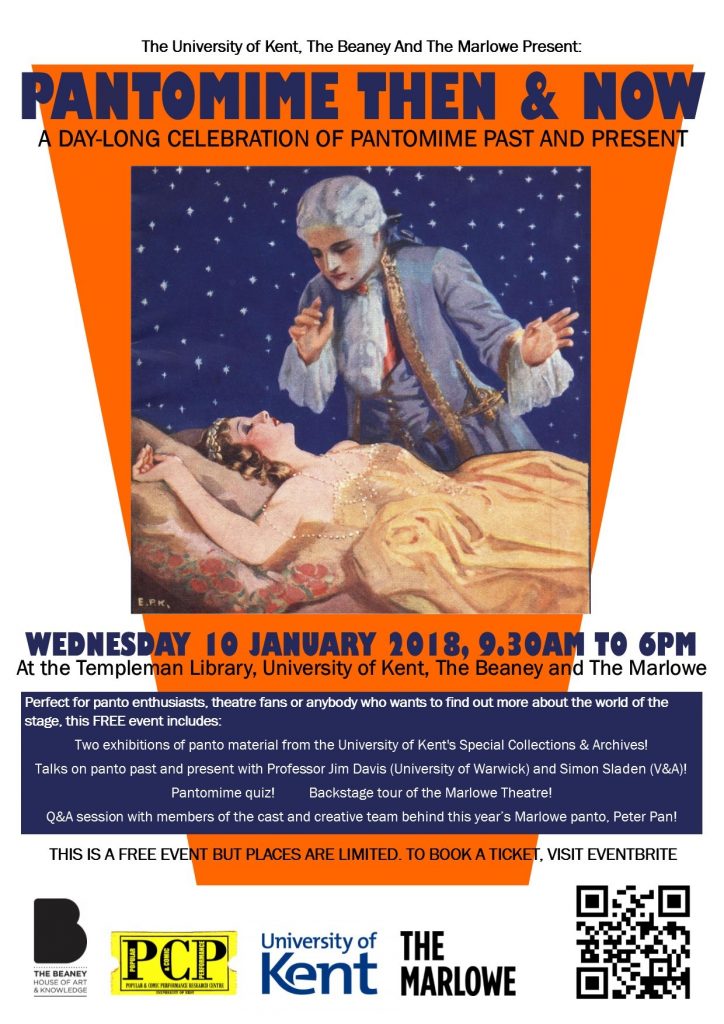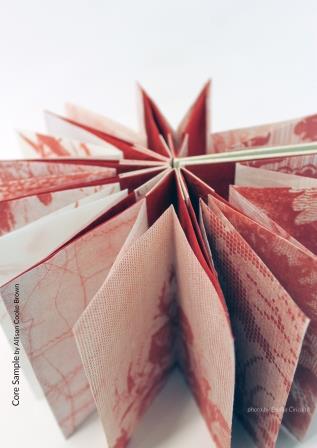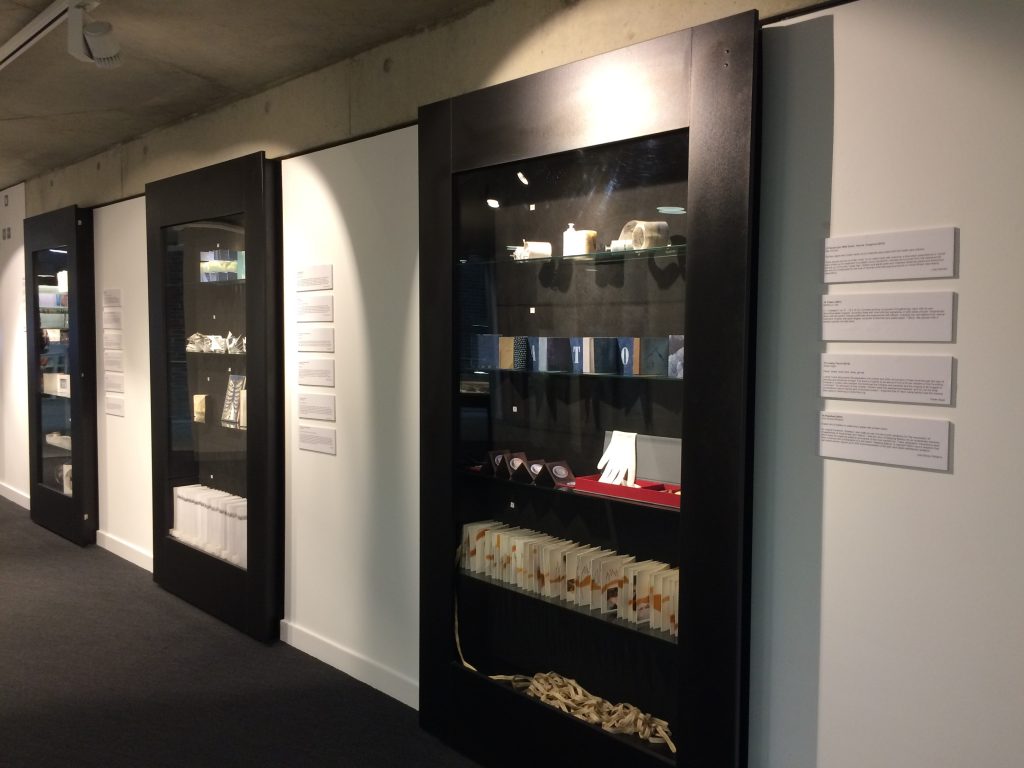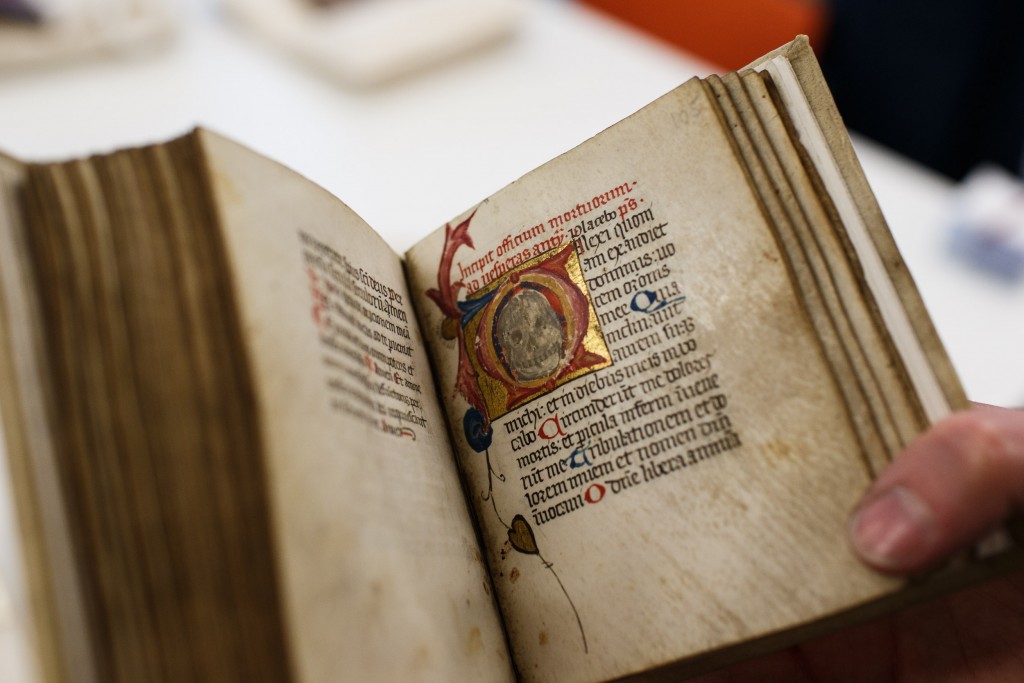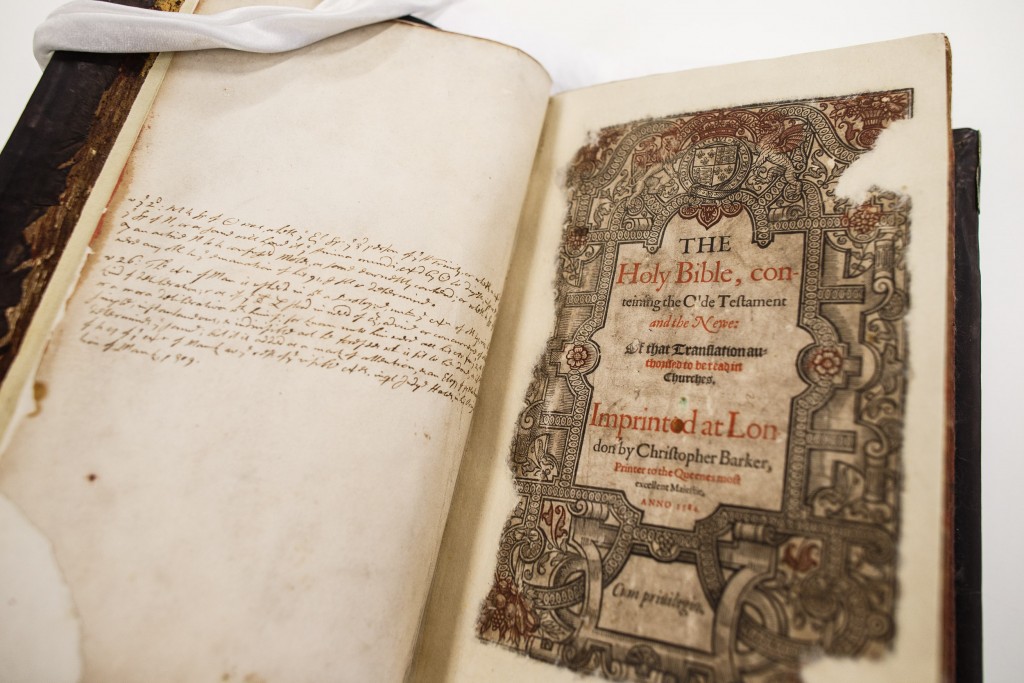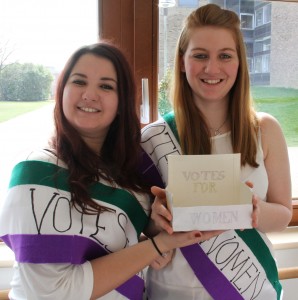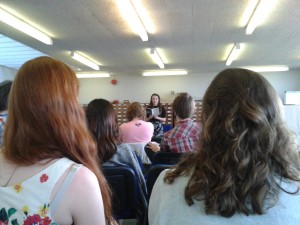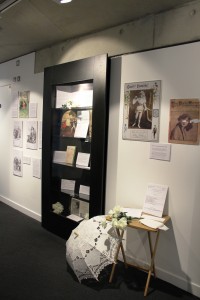
part of the British Theatre History exhibition
On Wednesday 6th April the yearly exhibition by second year students of the British Theatre History module launched. Whilst this has been an annual event for several years, this time the students faced a bigger challenge than ever: the size of the Templeman exhibition space. This is only the second exhibition to be held in the new space, and asking first time exhibition makers to fill it was initially concerning, but the students rose to the challenge admirably.
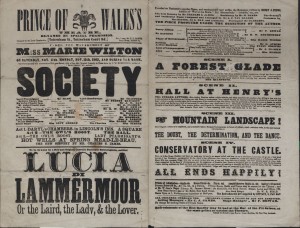
Playbill for Society at the Prince of Wales, currently on display
This module offers students the opportunity to learn about a hugely varied period of theatre history in Britain, ranging from Victorian pantomime through to suffragette plays. What’s unique about this module in particular, is that the student use Special Collections and Archives material to really come to terms with the time period, utilising Kent’s extensive Victorian and Edwardian theatre collections. The students look at a range of original material, such as playbills, play-scripts and theatre documentation, to learn about this exciting time.

A section about living as an actress
This year was different than previously in other ways too. Firstly, the students usually work in groups to produce sections of a general exhibition on British theatre history. This time,
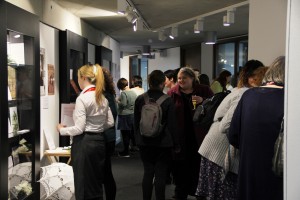
The exhibition launch
however, the students were challenged to work individually, and they did not disappoint! The other difference is that this time the students worked on a very specific theme: women. Within this theme the students looked at gender roles in pantomime, the representation of women in melodrama, influential female playwrights, theatre managers and actresses, and theatrical women as a political force. The result is a very well rounded, coherent exhibition, which catches the eye and the interest of passers-by.
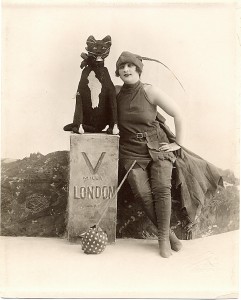
Dick Whittington from the Melville Collection
The module draws heavily from theatre collections housed here at Kent. Firstly, the Melville Collection, which tells the story of a theatrical dynasty of actors and theatre managers. The Melville’s owned many theatres around the country, but particularly the Lyceum in London, from which we hold music, takings books, and administrative documentation concerning productions put on there, as well as publicity material and scripts.

A lithograph showing a scene from the Octoroon
Secondly, the students use the Boucicault Collections. Dion Boucicault was a playwright and actor who worked both here and in America in the 19th century. He was particularly well known for his melodramas, most famously the Octoroon, a controversial play concerning race and slavery. One student has produced a detailed section concerning this play.

Photograph of Nellie Farren, from the Milbourne scrapbook
Many of the students use sections from the Milbourne scrapbook. This scrapbook contains photographs (and some signatures) of famous actors and actresses of the time period, and also accurate depictions of costumes worn in theatrical productions. The costume images were originally black and white, but the scrapbook’s owner attended the productions featured in it, and faithfully coloured in the images to represent what was being worn on the stage.
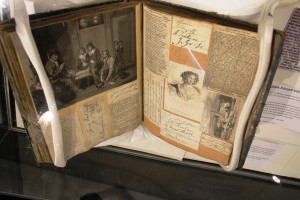
Pettingell scrapbook, currently on display
Finally the students used our Pettingell Collection. Frank Pettingell was an English actor in the 20th century. He obtained the collection from Arthur Williams, who was an actor and playwright in the 19th century. The collection is made up of a huge selection of printed and handwritten play scripts, many of which were used as performance prompt copies. There are also a handful of theatrical scrapbooks in the collection, one of which is on display.
The exhibition is up until the 25th April.

